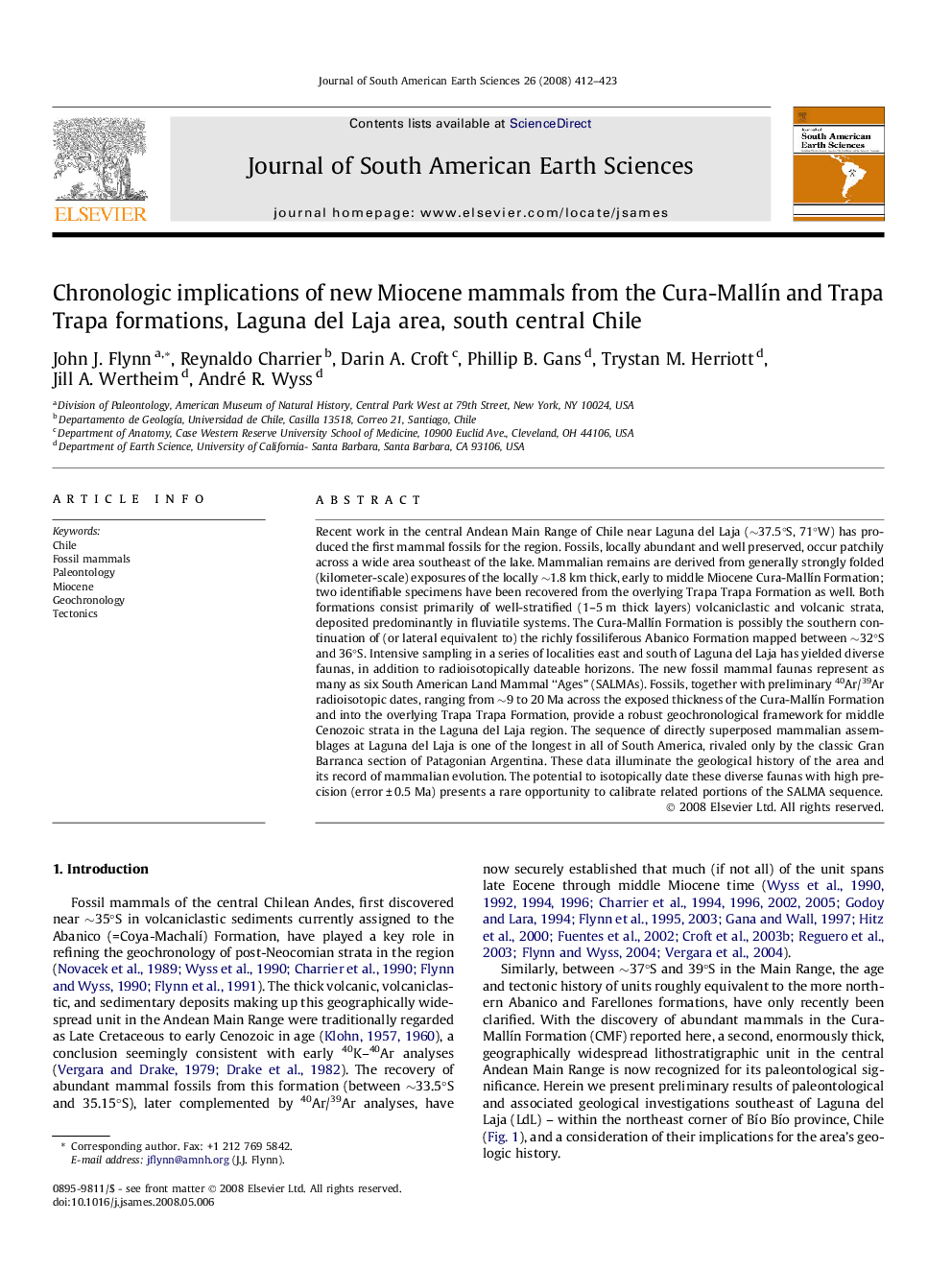| کد مقاله | کد نشریه | سال انتشار | مقاله انگلیسی | نسخه تمام متن |
|---|---|---|---|---|
| 4682802 | 1348944 | 2008 | 12 صفحه PDF | دانلود رایگان |

Recent work in the central Andean Main Range of Chile near Laguna del Laja (∼37.5°S, 71°W) has produced the first mammal fossils for the region. Fossils, locally abundant and well preserved, occur patchily across a wide area southeast of the lake. Mammalian remains are derived from generally strongly folded (kilometer-scale) exposures of the locally ∼1.8 km thick, early to middle Miocene Cura-Mallín Formation; two identifiable specimens have been recovered from the overlying Trapa Trapa Formation as well. Both formations consist primarily of well-stratified (1–5 m thick layers) volcaniclastic and volcanic strata, deposited predominantly in fluviatile systems. The Cura-Mallín Formation is possibly the southern continuation of (or lateral equivalent to) the richly fossiliferous Abanico Formation mapped between ∼32°S and 36°S. Intensive sampling in a series of localities east and south of Laguna del Laja has yielded diverse faunas, in addition to radioisotopically dateable horizons. The new fossil mammal faunas represent as many as six South American Land Mammal “Ages” (SALMAs). Fossils, together with preliminary 40Ar/39Ar radioisotopic dates, ranging from ∼9 to 20 Ma across the exposed thickness of the Cura-Mallín Formation and into the overlying Trapa Trapa Formation, provide a robust geochronological framework for middle Cenozoic strata in the Laguna del Laja region. The sequence of directly superposed mammalian assemblages at Laguna del Laja is one of the longest in all of South America, rivaled only by the classic Gran Barranca section of Patagonian Argentina. These data illuminate the geological history of the area and its record of mammalian evolution. The potential to isotopically date these diverse faunas with high precision (error ± 0.5 Ma) presents a rare opportunity to calibrate related portions of the SALMA sequence.
Journal: Journal of South American Earth Sciences - Volume 26, Issue 4, December 2008, Pages 412–423